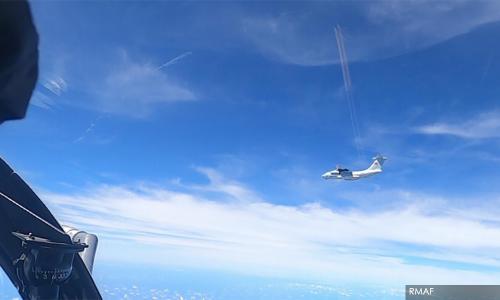LETTER | Beting Patinggi Ali incident - Plaaf testing the waters?
LETTER | The interception of sixteen Chinese aircraft by the RMAF Hawk jets has triggered a lot of heated discussion among the general public. It may also have an adverse implication on the state of Malaysia-China relations. Not to mention the possibility of it being exploited by other interested powers to justify their agendas.
Why the aircraft decided to fly toward Malaysian airspace is speculatively interesting. Both aircraft types are capable of intelligence gathering or reconnaissance if they are equipped for such missions.
It is not certain whether, among these aircraft, there were those of intelligence gathering/reconnaissance variant being deployed. More importantly, they are strategic military transport aircraft capable of projecting China’s military might well beyond its shores.
China has maintained a military outpost at the nearby Fiery Cross Reef where their troops are stationed. It is understandable for it to send out those types of aircraft to the area for resupply or training missions. But to have 16 aircraft flying in formation heading toward the coast of a neighbouring country raises a very serious question over China’s true intention.
China, seen through the previous pattern of its deployment in the South China Sea, would not want to directly ruffle its neighbours' feathers through a direct military show of force. Its assertion of its domination of the area is invariably performed through the presence of its coast guard or civilian fishing fleets.
The presence of such military assets in the area is indeed a new development that is worth noting. China has never been involved in any massive aerial military show of force beyond its borders before. The flying formation of the aircraft may suggest that it was a dry run of an exercise in an airborne operation.
The number of aircraft involved would further suggest that it is capable of deploying troops of brigade plus strength (around 3,000 personnel) assuming that each aircraft is capable of carrying around 200 paratroopers each. This is indeed an unsettling prospect and may be seen as an indication of a possible change in China’s strategic approach in the South China Sea.
As reported, and looking at the map of the area, the incident took place near Beting Patinggi Ali, about 110 nautical miles from the Malaysian coast. The location is within the Malaysian EEZ and just within a few minutes away from the Malaysian coast. The term maritime zone is a term used under Malaysian law but it has no bearing under international law.
Under international law, ships and aircraft are allowed to sail and fly freely under the rights of freedom of navigation.
At the point where the Chinese aircraft were intercepted, they were within the Malaysian EEZ but the direction of their flight path indicated that they were heading toward Malaysian territorial waters. The action by the RMAF was appropriate in so far as in preventing a violation of Malaysia’s airspace.
While it might be argued by China that the 16 Chinese aircraft did not violate any rule of international law, it must be understood that any act of aerial espionage or close-quarters military show of force are acts that could undermine confidence-building initiatives among regional countries. Something that we certainly can do without under the present situation.
As an independent and neutral country, Malaysia values its military relations with other countries. It is willing to participate in military exercises and other forms of military cooperation with all these countries. China included. It is purely on the account to gain skills and knowledge to further sharpen its ability to defend its sovereignty, integrity and dignity.
Other countries may see and interpret it differently. It may even be exploited to support their agenda. We respect that as their right to do so. Ultimately, however, Malaysia writes its own foreign policy narrative and would not rely on the narrative of others to determine its policy direction.
It is interesting to recall here that China was at the receiving end of this similar activity by the US in 2001. The incident took place about 110 nautical miles from the Hainan coast - about a similar distance when their aircraft were intercepted off the Sarawak coast by the RMAF.
In the incident, a US Navy EP-3F reconnaissance aircraft was intercepted by a Chinese J8 fighter aircraft. The US aircraft suffered minor damage and was forced to land on Hainan island. The Chinese J8 aircraft, due to the collision, was seriously damaged and crashed into the sea killing its pilot.
That was indeed a sad incident. China justified its action by claiming that it had to act to protect its territorial sovereignty and integrity. A plausible justification perhaps, from a strategic point of view.
A similar perspective should be applied by China in its dealing with its neighbours. Confucius the famous Chinese philosopher reminded us with this valuable saying, “Do unto others what you would like others to do unto you”.
A gem of an advice that we should always bear in mind in dealing with friends and neighbours.
The writer is a retired lieutenant colonel and a retired professor in defence studies and international law.
The views expressed here are those of the author/contributor and do not necessarily represent the views of Malaysiakini.
RM12.50 / month
- Unlimited access to award-winning journalism
- Comment and share your opinions on all our articles
- Gift interesting stories to your friends
- Tax deductable
